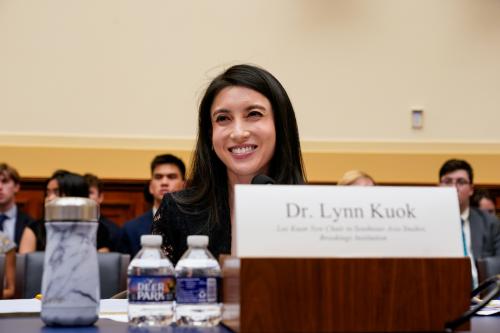At the United Nations summit on AIDS last month in New York, the Chinese minister of health, Zhang Wenkang, made an astonishing announcement: 600,000 people in China have AIDS or are infected with H.I.V., the virus that causes it. The Chinese government had never before admitted to large numbers of H.I.V. cases. And what this estimate shows, given the conditions fostering the spread of H.I.V. in China, is that a major explosion of H.I.V. and AIDS will happen there.
The government does not really know how many of its citizens have H.I.V. Chinese journalists working in Henan estimate that between 500,000 and 700,000 people in that single province are carrying the virus. But even projections built on official Chinese statistics, which are probably low, indicate that more than 180,000 new cases will be added in 2002 alone. Even if China reduces the rate of its annual growth in H.I.V. cases, which it now reports as 30 percent, to 20 percent in five years, its caseload under these projections would expand to more than four million by 2010.
Like many countries before it, China has been slow in facing up to AIDS. Misconceptions, taboos and outright deceit have fostered denial among both officials and the broader population. This reluctance to be open and realistic is dangerous, as the experience of other countries shows.
In India, for example, deeply rooted cultural norms and taboos still thwart frank assessments and effective preventive measures, even though the United Nations estimates that if the disease is not checked, a mind-boggling 37 million people in India could be infected over the next 10 to 15 years. South Africa, where AIDS was barely acknowledged for years and whose president remains doubtful even now about its cause, today holds the dismal distinction of having the world’s largest caseload of H.I.V. infection and AIDS, 4.5 million. And even in industrialized nations, like the United States, lingering social stigmas can still create substantial hurdles to combating the spread of H.I.V.
But it is possible to make headway against the disease. China should look to its neighbor Thailand, where initial denial was eventually overcome. Thailand has 800,000 cases of AIDS and H.I.V. infection, but aggressive public health campaigns are stemming the disease’s spread.
China’s one-party politics is a barrier to its facing up to AIDS. After long labeling the disease as a Western problem, the government will not easily switch to an attitude of openness about this epidemic. Confronting it would require acknowledging problems, like rural poverty, drug abuse, prostitution and unsanitary blood collection, that defensive local and national leaders would rather underplay or keep hidden.
The government’s shortsighted attitude has often revealed itself. Because officials feared international attention, a prominent gynecologist and H.I.V. activist, Gao Yaojie, was denied permission to travel abroad this past spring to accept an award for her work from the United States-based Global Health Council. Politicians from Guangzhou Province proposed a national law this year making it a crime to pass H.I.V. to another person and establishing quarantine camps instead of taking a health-care approach. In many parts of the country, local officials obstruct access to villages with high incidences of AIDS.
Even if the will to fight AIDS realistically can be found, China won’t have an easy job doing it. Social and economic change has caused new dislocations. People move around the country much more freely than they once did, making more rapid spread of the disease possible. Some 100 million itinerant laborers, the floating population, as they are called, have no permanent homes or jobs and lack any social safety net. And intravenous drug use, prostitution, premarital sex, and histories of multiple sex partners are all on the rise in China. Because about two- thirds of Chinese H.I.V. carriers are poor and poorly educated peasants and farmers, awareness of the disease is severely limited. Indeed, the epidemic was first widely spread in China when destitute farmers were lured by cash into a medically unsanitary and unethical blood collection scheme.
What is more, medical researchers have found eight different strains of the H.I.V.-1 virus in China, which would make treatment complicated even if drugs were readily available. The most widely available drugs on the market today are those that are most effective against H.I.V.-1 strains found predominantly in the United States and Western Europe.
Public health specialists from the United States Center for Disease Control and Prevention will travel to China later this month to help assess the H.I.V. problem. Secretary of State Colin Powell is expected to discuss it with officials in Beijing on his trip there at the end of this month. These are positive signs that the two governments recognize the importance of drawing attention to the issue.
But if China is to be saved from a grim future with many millions of cases, Beijing must quickly develop effective prevention and education strategies. And before that can happen, it must accept the necessity of candor.
The Brookings Institution is committed to quality, independence, and impact.
We are supported by a diverse array of funders. In line with our values and policies, each Brookings publication represents the sole views of its author(s).



Commentary
Op-edThe Coming AIDS Crisis in China
July 16, 2001